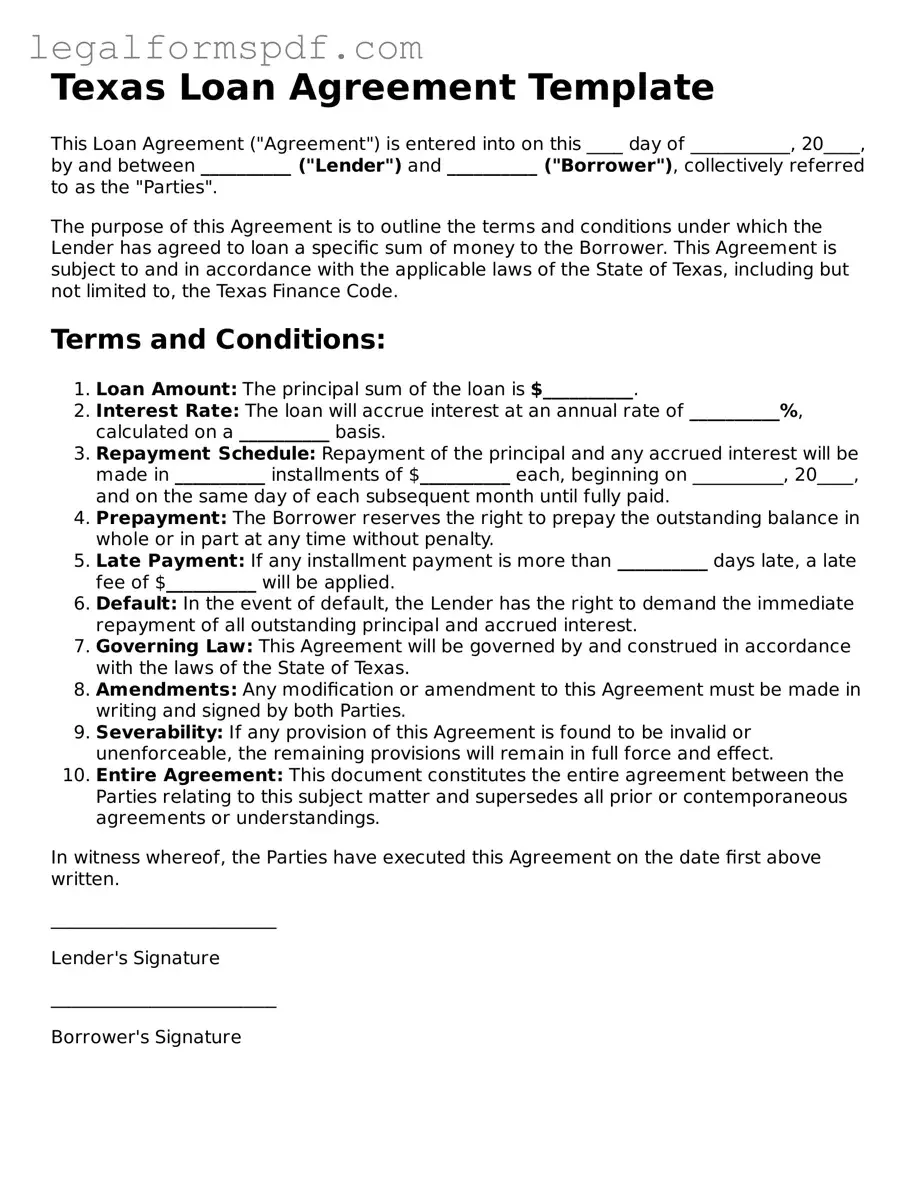What is a Texas Loan Agreement form?
A Texas Loan Agreement form is a legally binding document between two parties - often a borrower and a lender - that outlines the terms and conditions of a loan. The form sets forth the details such as the loan amount, interest rate, repayment schedule, and any collateral involved. It serves to protect both the lender's interest and ensure the borrower knows their obligations.
Who needs to sign the Texas Loan Agreement form?
The Texas Loan Agreement form must be signed by the borrower and the lender. In some cases, if collateral is involved or if there are guarantors for the loan, they may also need to sign the agreement. It’s not just the signatures that matter; ensuring that all parties have a clear understanding of the terms is equally important.
Does the Texas Loan Agreement form need to be notarized?
While notarization is not a legal requirement for a Texas Loan Agreement to be considered valid, it can add an extra layer of authentication to the document. Notarization can help in the enforcement of the agreement, should any disputes arise. Yet, the focus should be on the completeness and accuracy of all agreed-upon terms.
Can I modify a Texas Loan Agreement form after it has been signed?
Yes, modifications can be made to a Texas Loan Agreement form after it has been signed, but any changes require the agreement of all parties involved. Modifications must be documented in writing and attached as amendments to the original agreement. This ensures that all changes are tracked and agreed upon, maintaining the integrity of the legal document.
What happens if the borrower defaults on the loan?
If the borrower defaults on the loan, the lender has the right to pursue legal action to recover the due amount. The specific actions that can be taken depend on the terms laid out in the Texas Loan Agreement form, including the possibility of seizing collateral if it was part of the agreement. Often, such situations are resolved through negotiation or restructuring of the loan's terms to avoid legal actions.
Is there a difference between a Texas Loan Agreement form and a promissory note?
Yes, there is a significant difference. A Texas Loan Agreement form is a comprehensive contract that includes detailed terms and conditions of the loan, such as repayment schedule, interest rates, and legal remedies in case of defaults. A promissory note, on the other hand, is a simpler document that outlines the borrower's promise to repay the loan. It may not include detailed terms like a loan agreement does.
How can I ensure my Texas Loan Agreement form is legally binding?
To ensure your Texas Loan Agreement form is legally binding, it should include all essential terms of the agreement, be signed by all parties involved, and ideally, be reviewed by a legal professional. Clarity, completeness, and conformity with Texas state laws are key to establish its enforceability.
Can the Texas Loan Agreement form be used for both secured and unsecured loans?
Yes, the Texas Loan Agreement form can be drafted to suit both secured and unsecured loans. The primary difference lies in whether or not collateral is offered by the borrower. For secured loans, details about the collateral and the conditions under which it can be seized by the lender in case of default are included. For unsecured loans, such terms are omitted as no collateral is involved.
